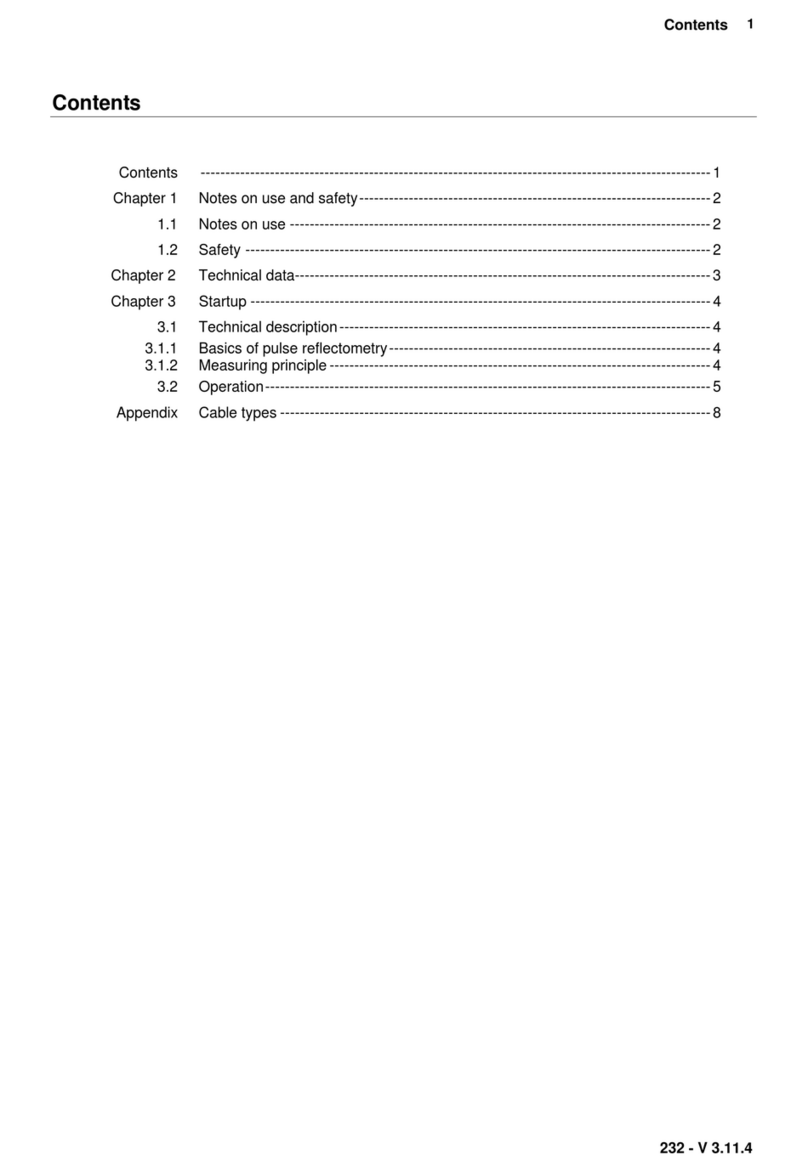
Contents
10911 V01.06
6.5.2.3DiSEqC V1.2 control ------------------------------------------------------------------------------------ 21
6.5.2.4DiSEqC V2.0 control ------------------------------------------------------------------------------------ 22
6.5.3UNICABLE ------------------------------------------------------------------------------------------------ 22
6.5.3.1Activation and Configuration -------------------------------------------------------------------------- 23
6.5.3.2Operation -------------------------------------------------------------------------------------------------- 24
6.5.4JESS -------------------------------------------------------------------------------------------------------- 26
6.5.4.1Activation and Configuration -------------------------------------------------------------------------- 26
6.5.4.2Operation -------------------------------------------------------------------------------------------------- 26
6.5.5Programming antenna wall outlets ------------------------------------------------------------------ 27
6.5.6LNB current measurement ---------------------------------------------------------------------------- 28
CHAPTER 7 ANALYZER----------------------------------------------------------------------------------------- 29
7.1Accessing the analyzer--------------------------------------------------------------------------------- 29
7.2Frequency segment (SPAN) -------------------------------------------------------------------------- 29
7.3Cursor ------------------------------------------------------------------------------------------------------ 29
7.4Level measurement ------------------------------------------------------------------------------------- 30
7.5Progress bar ---------------------------------------------------------------------------------------------- 30
7.6Switching to measuring receiver mode------------------------------------------------------------- 30
7.6.1Switching to measuring receiver mode with SCAN --------------------------------------------- 30
7.6.2Transponder SCAN ------------------------------------------------------------------------------------- 30
7.7Activating the remote supply -------------------------------------------------------------------------- 31
CHAPTER 8 SCAN SUPPORT FOR FINDING SATELLITES ------------------------------------------ 32
8.1SAT SCAN ------------------------------------------------------------------------------------------------ 32
8.2SAT list ----------------------------------------------------------------------------------------------------- 33
8.3Transponder list ------------------------------------------------------------------------------------------ 33
8.4Favourites list --------------------------------------------------------------------------------------------- 34
8.5Importing a SAT list ------------------------------------------------------------------------------------- 34
CHAPTER 9 MPEG DECODER -------------------------------------------------------------------------------- 35
9.1Program Service Information (PSI)------------------------------------------------------------------ 35
9.2Network Information Table (NIT)--------------------------------------------------------------------- 35
9.3Picture and sound control ----------------------------------------------------------------------------- 36
9.4Display of MPEG video parameters----------------------------------------------------------------- 37
9.5Video bit rate measurement--------------------------------------------------------------------------- 37
9.6Dynamic program switching--------------------------------------------------------------------------- 37
CHAPTER 10 MEMORY MANAGEMENT--------------------------------------------------------------------- 38
10.1Saving ------------------------------------------------------------------------------------------------------ 38
10.2Recalling --------------------------------------------------------------------------------------------------- 38
10.3Memory functions---------------------------------------------------------------------------------------- 38
10.3.1Erasing the memory------------------------------------------------------------------------------------- 38
10.3.2Erasing a memory location ---------------------------------------------------------------------------- 39
10.3.3Sorting the memory ------------------------------------------------------------------------------------- 39
10.3.4Memory protection--------------------------------------------------------------------------------------- 39
10.3.5Disable memory protection---------------------------------------------------------------------------- 39
10.3.6Memory export ------------------------------------------------------------------------------------------- 39
10.3.7Memory import ------------------------------------------------------------------------------------------- 39
CHAPTER 11 USB-A INTERFACE------------------------------------------------------------------------------ 41
CHAPTER 12 COMMON INTERFACE ------------------------------------------------------------------------- 42
12.1Inserting a CA module---------------------------------------------------------------------------------- 42
12.1.1Install before version Vxx.02-------------------------------------------------------------------------- 42
12.1.2Install after version V01.02 ---------------------------------------------------------------------------- 42
12.2Operation -------------------------------------------------------------------------------------------------- 42
12.3Card menu------------------------------------------------------------------------------------------------- 42
CHAPTER 13 OPTICAL RECEIVER (OPTIONAL)---------------------------------------------------------- 44
13.1 Introduction------------------------------------------------------------------------------------------------ 44
13.2 Activating the optical input----------------------------------------------------------------------------- 45
13.3 Setting the wavelength --------------------------------------------------------------------------------- 45
13.4 Measuring the optical power -------------------------------------------------------------------------- 45
13.5 Measuring the optical modulation index (OMI) --------------------------------------------------- 46
13.6 Remote supply ------------------------------------------------------------------------------------------- 46






























